Larock’s Medical Office Administration certificate Program gives students the knowledge necessary to perform the duties of a front-end office worker in a healthcare setting. You will learn medical terminology, anatomy and physiology, medical laws/ethics, ICD-10 coding, patient registration, management of health information, interpersonal communications, medical claims forms, financial management, human resource management, patient scheduling, office cancellations, insurance payments, Microsoft office applications and more. The Medical Office Administration Program includes simulation & skills laboratory practice to further develop your skills by some independent study.
Medical Office Administration students can expect to gain employment in hospitals, doctor’s offices, urgent cares, clinics, emergency departments, and more.
Combining the Medical Billing and Coding Specialist Program and the Medical Office Administration Program gives students additional employment opportunities as well as a broader knowledge and understanding of the healthcare field. And it only takes 3 additional weeks to get both!
Fast Facts
Program Length: 15 weeks
Small Class Sizes
Flexible Schedule
Affordable, interest-free payment options
See Class Schedule
View Schedules by Location Below:
Click below to see upcoming program start dates by location.
| Start | Length | Days | Times | Cost |
|---|---|---|---|---|
| May 6, 2024 | 15 weeks | ONLINE-No Set Meeting Times | $1697 | |
| June 3, 2024 | 15 weeks | ONLINE-No Set Meeting Times | $1697 | |
| July 8, 2024 | 15 weeks | M/W/F | 10am-2pm | $1697 |
| July 8, 2024 | 15 weeks | M/W/F | 6pm-10pm | $1697 |
| August 5, 2024 | 15 weeks | ONLINE- No Set Meeting Times | $1697 |
| Start | Length | Days | Times | Cost |
|---|---|---|---|---|
| May 6, 2024 | 15 weeks | ONLINE-No Set Meeting Times | $1697 | |
| June 3, 2024 | 15 weeks | ONLINE-No Set Meeting Times | $1697 | |
| July 8, 2024 | 15 weeks | M/W/F | 10am-2pm | $1697 |
| July 8, 2024 | 15 weeks | M/W/F | 6pm-10pm | $1697 |
| August 5, 2024 | 15 weeks | ONLINE- No Set Meeting Times | $1697 |
| Start | Length | Days | Times | Cost |
|---|---|---|---|---|
| May 6, 2024 | 15 weeks | ONLINE-No Set Meeting Times | $1697 | |
| June 3, 2024 | 15 weeks | ONLINE-No Set Meeting Times | $1697 | |
| July 8, 2024 | 15 weeks | M/W/F | 10am-2pm | $1697 |
| July 8, 2024 | 15 weeks | M/W/F | 6pm-10pm | $1697 |
| August 5, 2024 | 15 weeks | ONLINE-No Set Meeting Times | $1697 |
| Start | Length | Days | Times | Cost |
|---|---|---|---|---|
| May 6, 2024 | 15 weeks | ONLINE-No Set Meeting Times | $1697 | |
| June 3, 2024 | 15 weeks | ONLINE-No Set Meeting Times | $1697 | |
| July 8, 2024 | 15 weeks | M/W/F | 10am-2pm | $1697 |
| July 8, 2024 | 15 weeks | M/W/F | 6pm-10pm | $1697 |
| August 5, 2024 | 15 weeks | ONLINE-No Set Meeting Times | $1697 |
Job Titles for Medical Office Administrators include, but are not limited to:
Medical Office Administrator
Certified Medical Administrative Assistant (CMAA)
Medical Administrative Assistant
Front Desk Clerk
Unit Clerk
Medical Receptionist
Medical Office Manager
Registration Clerk
More on Medical Office Administration


